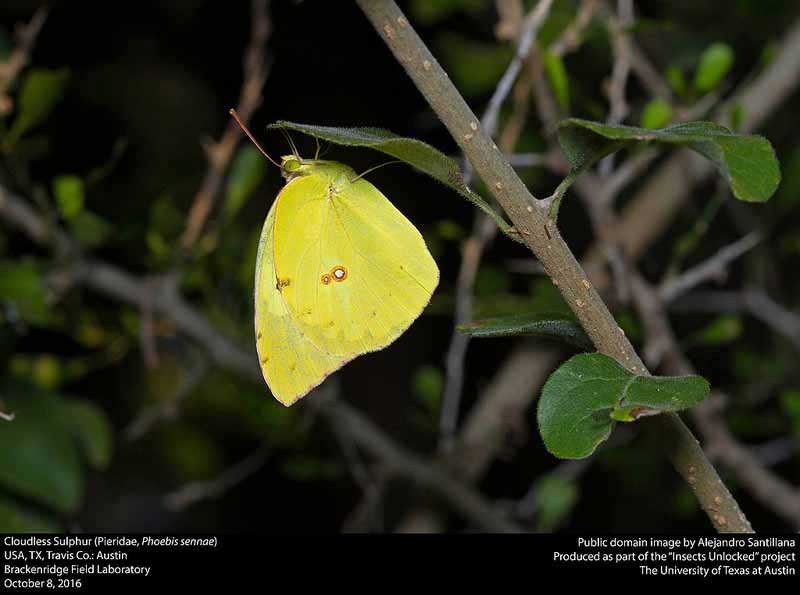
Superregnum: Eukaryota
Cladus: Unikonta
Cladus: Opisthokonta
Cladus: Holozoa
Regnum: Animalia
Subregnum: Eumetazoa
Cladus: Bilateria
Cladus: Nephrozoa
Cladus: Protostomia
Cladus: Ecdysozoa
Cladus: Panarthropoda
Phylum: Arthropoda
Subphylum: Hexapoda
Classis: Insecta
Cladus: Dicondylia
Subclassis: Pterygota
Cladus: Metapterygota
Infraclassis: Neoptera
Cladus: Eumetabola
Cladus: Endopterygota
Superordo: Panorpida
Cladus: Amphiesmenoptera
Ordo: Lepidoptera
Subordo: Glossata
Cladus: Coelolepida
Cladus: Myoglossata
Cladus: Neolepidoptera
Infraordo: Heteroneura
Cladus: Eulepidoptera
Cladus: Ditrysia
Cladus: Apoditrysia
Cladus: Obtectomera
Superfamilia: Papilionoidea
Familia: Pieridae
Subfamilia: Coliadinae
Genus: Phoebis
Species: Phoebis sennae
Subspecies: P. s. amphitrite – P. s. marcellina – P. s. sennae
Name
Phoebis sennae (Linnaeus, 1758)
Synonyms
Papilio sennae Linnaeus, 1758
Papilio eubule Linnaeus, 1767
Papilio drya Fabricius, 1775
Callidryas sennae pallida Cockerell, 1889
Catopsilia eubule ab lichas d'Almeida, 1922
Phoebis eubule sennae f sennalba F.M. Brown, 1929
Phoebis eubule eubule f browni Field, 1936
References
Primary references
Linnaeus, C. 1758. Systema Naturae per regna tria naturae, secundum classes, ordines, genera, species, cum characteribus, differentiis, synonymis, locis. Editio Decima, Reformata. Tomus I. Holmiæ (Stockholm): impensis direct. Laurentii Salvii. 824 pp. DOI: 10.5962/bhl.title.542 BHL p. 470 BHL Reference page.
Additional references
Cong, Q., Shen, J., Warren, A.D. & Grishin, N.D., 2016. Speciation in Cloudless Sulphurs gleaned from complete genomes. Genome Biology and Evolution March 6th, 2016. PDF. Reference page.
Lamas, G., 2004: Atlas of Neotropical Lepidoptera; Checklist: Part 4A; Hesperioidea - Papilionoidea
Links
ZooBank: 01986BB2-4870-4A1D-9294-DD3C1F7AB016
Phoebis sennae, the cloudless sulphur, is a mid-sized butterfly in the family Pieridae found in the Americas. There are several similar species such as the yellow angled-sulphur (Anteos maerula), which has angled wings, statira sulphur (Aphrissa statira), and other sulphurs, which are much smaller.
Distribution
Their range is wide, from South America to southern Canada, in particular southwestern Ontario.[3] They are most common from Argentina to southern Texas, Georgia, and Florida, but are often visitors outside this range becoming more rare further north.
Habitat
The common habitats of this butterfly are open spaces, gardens, glades, seashores, and watercourses.
Diet
The adult butterfly feeds on nectar from many different flowers with long tubes including cordia, bougainvillea, cardinal flower, hibiscus, lantana, and wild morning glory. The larvae also feed on sennas and partridge peas.[4]
Senna hebecarpa (American senna) is a larval host and nectar source for the cloudless sulphur butterfly in the Eastern United States.[5]
Life cycle
The breeding season is dependent on the climate of the area, from midsummer to fall in the cooler areas, to year-round where the climate is warmer.
Egg
The cloudless sulphur starts off as a pitcher-shaped white egg. Eventually it will turn to a pale orange. The egg stage lasts six days.
Caterpillar
Cloudless Sulfur Caterpillar (Phoebis sennae) eating Yellow Jessamine Flower (Gelsemium sempervirens)
Once the egg hatches, a caterpillar emerges that is yellow to greenish, striped on sides, with black dots in rows across the back. The host plant may be partridge pea (Chamaecrista cinerea), sennas (Senna),[6] clovers (Trifolium), or other legumes (Fabaceae). The caterpillar will usually grow to a length between 41 and 45 mm (1.6 and 1.8 in).
Chrysalis
The caterpillar will form a chrysalis that is pointed at both ends and humped in the middle. The chrysalis will be either yellow or green with pink or green stripes. From the chrysalis comes a medium-sized butterfly (55–70 mm (2.2–2.8 in)) with fairly elongated but not angled wings.
Adult
The male butterfly is clear yellow above and yellow or mottled with reddish brown below and the female is lemon yellow to golden or white on both surfaces, with varying amounts of black spotting along the margin and a black open square or star on the bottom forewing. Wingspan:
Subspecies
Listed alphabetically:[7]
P. s. amphitrite (Feisthamel, 1839) – Chile
P. s. sennae or P. s. eubule[3] – Jamaica, South Carolina, Kansas, Virginia, Florida, Cuba
P. s. marcellina (Cramer, [1779]) – Mexico, Uruguay, Galapagos, Suriname, Honduras, Brazil, Argentina, Bolivia, Peru
References
"NatureServe Explorer 2.0 Phoebis sennae Cloudless Sulphur". explorer.natureserve.org. Retrieved 3 October 2020.
Walker, A. (2020). "Phoebis sennae". IUCN Red List of Threatened Species. 2020: e.T173004589A173004624. doi:10.2305/IUCN.UK.2020-3.RLTS.T173004589A173004624.en. Retrieved 18 November 2021.
Cloudless Sulphur, Butterflies of Canada
C., Minno, Marc (2010). Butterflies of central florida : a guide to common and notable species. [Place of publication not identified]: Quick Reference Pub Inc. ISBN 978-0982885604. OCLC 943772335.
Lady Bird Johnson Wildflower Center Native Plant Information Network: Senna hebecarpa
Clark, Dale. "Phoebis sennae". Dallas County Lepidopterists' Society. Retrieved 2008-07-21.
Phoebis sennae, funet.fi
Retrieved from "http://en.wikipedia.org/"
All text is available under the terms of the GNU Free Documentation License

